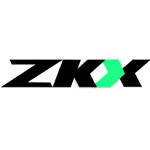StarkNet Ecosystem
| Projects | Status | Date start | Raised | Launchpad | Ecosystem | X score | Interest lvl | Industry | ||
|---|---|---|---|---|---|---|---|---|---|---|
| TBA | Blockchain +3 | |||||||||
| TBA | Blockchain | |||||||||
| TBA | $12M | Trading & Investing +1 | ||||||||
| TBA | $10M | Exchanges & Wallets | ||||||||
| TBA | $255M | Blockchain +1 | ||||||||
ICO IEO IDO Past | Jun 16, 2024 | $4,5M | Exchanges & Wallets +1 | |||||||
| Jun 16, 2024 | $5M | Blockchain +2 | ||||||||
What is StarkNet network
StarkNet is an L2 network for ETH that implements Zk-Rollups. This technology lets the blockchain scaling with no loss of security and transaction speed, processing transactions without the use of the core network.
StarkNet was developed by Israeli company StarkWave Industries in 2018, led by Eli Ben-Sasson. The team also includes ZK-STARK co-authors Mikhail Ryabtsev, Uri Kolodny and Alessandro Chiesa.
The primary challenge that StarkNet solves is scalability and lowering the cost of transactions on the blockchain, while eliminating the loss of speed and security.
The first to use StarkNet were decentralized crypto exchange dYdX and ImmutableX, which is focused on the NFT sphere. Note that the network is used in such projects as Rhino, Sorare and a number of other systems.
Investors & partners
- Multicoin Capital
- Sequoia Capital
- Paradigm
- Polychain Capital
- Bitmain
- ConsenSys
- Pantera Capital
- Coinbase Ventures
- Ethereum Foundation
- Three Arrows Capital and many others.
At the moment StarkNet is valued at more than 8B dollars, with the total amount of raised investments amounting to about 282M dollars.
Over the course of its existence, STRK has attracted some pretty big strategic partners, including:
- Braavos
- Argent
- Celestia
- Chainlink Labs
- Orbiter Finance
- Alchemy
How does StarkNet work
Since all the data is processed offchain, StarkNet employs the ZK-STARK mechanism to ensure safety. This is one variety of Zk-rollup.
Notably, Zk-STARK is based on the Zero-Knowledge Proof (ZKP) crypto protocol. This model enables a party to verify the validity of an assertion without any other information from the other party.
As a result, StarkNet sends just the necessary information about the merged transaction. This approach provides higher throughput, increases transaction speeds and reduces commission costs all the while keeping Ethereum secure.
Ecosystem of STARKNET
A number of significant tools can be seen in the StarkNet system, integration with decentralized applications, crypto wallets, bridges, block explorers, indexers and enhanced APIs, audit and security programs and more.
Functionality options of StarkNet blockchain
StarkNet is actually made up of many elements that offer their own capabilities in the ecosystem:
- Contracts registry
- Provers
- Sequencers
- SHARP mechanism for validating ZKP
- Cairo language
- A repository where smart-contracts are stored
- StarkGate bridge
- Nile framework
StarkNet core advantages
- Improves scalability
- Faster transactions
- Zk-STARK processing method for privacy
- Large range of applications: DeFi, NFT, gaming and more
- A native virtual machine
- StarkNet uses data storage
Token STRK
STRK is a native token of the network. This token has three main functions: payment of commissions, governance, and staking.
The STRK token can also be used to participate in the management of the community protocol. This is done by “wrapping” the STRK, turning it into a vSTRK at a 1:1 ratio. This allows a user to vote or assign another user to vote on their behalf.
Conclusion
As you can see, Starknet has major prospects for development. The main direction is to reduce transaction fees and increase the efficiency of network scaling.
The STRK ecosystem is developed with a focus on its own requirements, not just as an add-on for ETH. Despite many other blockchains, Starknet uses its own development language and a virtual machine with Cairo instead of Ethereum items. And while this contributes to some interoperability limitations, there is a justification for this approach given the efficiency and speed at which data is processed!







